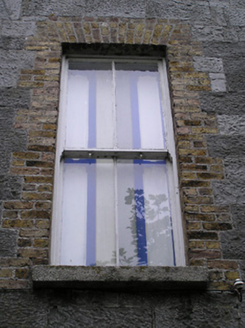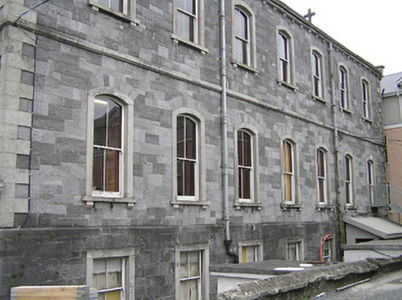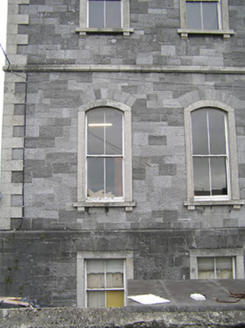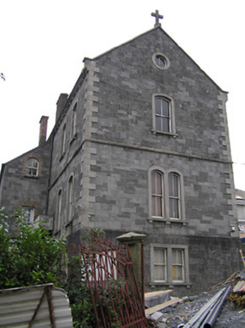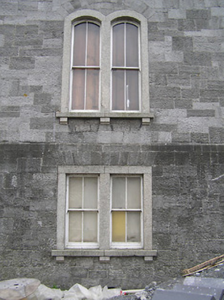Survey Data
Reg No
12003004
Rating
Regional
Categories of Special Interest
Architectural, Historical, Social
Original Use
Convent/nunnery
In Use As
Hostel (charitable)
Date
1865 - 1870
Coordinates
250207, 156452
Date Recorded
27/07/2004
Date Updated
--/--/--
Description
Attached seven-bay two-storey over raised basement building with dormer attic, built 1868, built as return wing to convent with single-bay two-storey lean-to lower flanking bay with half-dormer attic to east. Now in use as hostel. Pitched slate roof (lean-to to flanking bay) with clay ridge tiles, red brick Running bond chimney stacks, cut-stone coping to gables having cross finials to apexes, and cast-iron rainwater goods on cut-stone eaves having cut-granite corbels. Broken coursed tooled cut-limestone walls with granite ashlar quoins to corners, and cut-granite stringcourse to first floor. Square-headed window openings to basement (some paired) with camber-headed window openings to remainder (oculus window to gable; square-headed window openings to flanking bay with round-headed window opening to half-dormer attic) having cut-granite sills on corbels, cut-granite surrounds (yellow brick block-and-start surrounds to flanking bay), cut-limestone voussoirs (some forming camber relieving arches over), and two-over-two timber sash windows. Interior with timber panelled shutters to window openings. Set back from road in grounds shared with Good Shepherd Centre (Loreto Convent).
Appraisal
An attractive middle-size range representing an element of the expansion of the Saint James's Park House complex on site in the mid to late nineteenth century following the transferral of a Loreto order to Kilkenny from Borris-in-Ossory in nearby County Laois. Exhibiting very high quality stone masonry the combination of limestone and granite produces an appealing monochromatic palette in the composition the austere quality of which is compounded by the sparse decorative treatment throughout. Despite extensive renovation works that have not had a beneficial impact on some of the remaining ranges in the complex the retention of most of the original fabric in this instance both to the exterior and to the interior maintains the character of the site in an historic setting.
